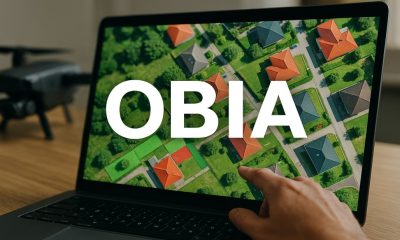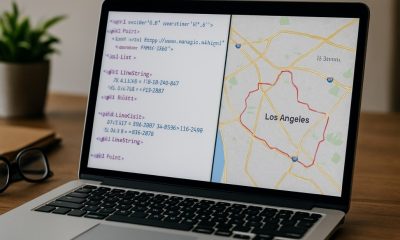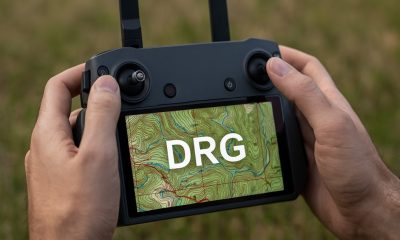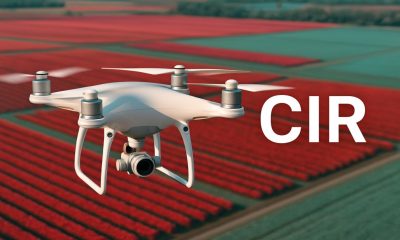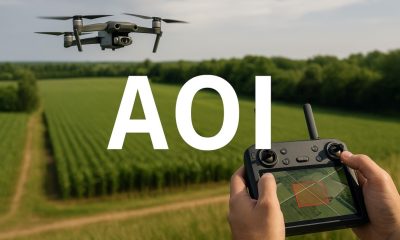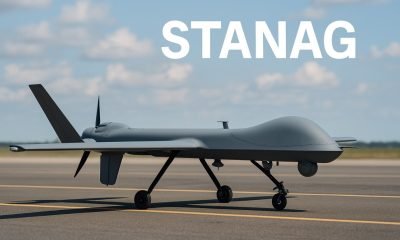- Acronym Guide
- AAM
- ABS
- AC
- ACAS
- ADS-B
- AFAC
- AGL
- AI
- AIM
- ALS
- AM
- AMA
- ANSP
- AOI
- APPI
- AUV
- AUVSI
- ARPAS-UK
- ASTM
- ATC
- BVLOS
- CAA
- CAAC
- CAB
- CASA
- CATT
- CBO
- CBR
- CBRN
- CDMA
- CDR
- CFR
- CIR
- COA
- COMINT
- CORS
- COTP
- COTR
- CPTED
- CV
- C2
- DAA
- DEM
- DFI
- DFS
- DGCA
- DHS
- DOD
- DPA
- DPEs
- DRG
- DRO
- DSM
- DSMX
- DSP
- DSSS
- DTM
- EASA
- EFT
- EO
- EOD
- EO/IR
- ELINT
- EMI
- ESC
- EVLOS
- eVTOLs
- FAA
- FCC
- FCS
- FHSS
- FICCI
- FLIR
- FOB
- FOV
- FPS
- FPV
- GBDAA
- GCP
- GCS
- GDPR
- GML
- GNSS
- GPS
- GSD
- GVC
- HDR
- HOGE
- IACRA
- ICAO
- ICS
- IMU
- INS
- IR
- ISA
- ISR
- ITU
- JARUS
- LAAMS
- LAANC
- LAATM
- LAI
- LBA
- LIDAR
- LOS
- LSALT
- MAC
- MAVLink
- MLIT
- MMS
- MSL
- MTOM
- NDAA
- NCSL
- NFZ
- NIST
- NMEA
- NOTAM
- NPA
- NPRM
- NTIA
- OBIA
- OEM
- OFDM
- OOP
- PASM
- PAV
- PCV
- PdM
- PEC
- PIC
- PID
- PIPL
- PLD
- PM
- PN
- PPK
- PPS
- PSM
- PWM
- UAM
- UAOP
- UAS
- UASTM
- UAV
- UCAVs
- UHD
- UHF
- USV
- UTM
- RAIM
- RCC
- RCS
- RFI
- ReOC
- RePL
- RMS
- ROI
- RPAS
- RPC
- RTH
- RTK
- SaR
- SAR
- SARP
- SBAS
- S.Bus
- SBIR
- SEDENA
- SfM
- SFOC
- SIGINT
- SLAM
- SMS
- SORA
- STANAG
- STTR
- sUAS
- TCAS
- TCCA
- TFR
- TIN
- TOF
- TP
- TPS
- TSA
- VHF
- VLOS
- VTOL
Drone Acronyms
What is CASA (Civil Aviation Safety Authority)?
By
Jacob StonerTable Of Contents

Definition
CASA stands for the Civil Aviation Safety Authority. It is the regulatory body responsible for overseeing and regulating civil aviation safety in Australia. CASA’s primary role is to ensure that the Australian aviation industry operates safely, efficiently, and in accordance with international and national standards. This includes the regulation of both manned and unmanned aircraft, including drones.
Usage
CASA sets the rules and guidelines for all aspects of civil aviation in Australia, including the certification of pilots, the airworthiness of aircraft, air traffic management, and the safety of drone operations. CASA also provides guidance, education, and resources to help the aviation community comply with these regulations. For drone operators, CASA’s regulations cover areas such as pilot certification, operational limits, no-fly zones, and safety protocols.
Relevance to the Industry
CASA is critical for ensuring the safety of the aviation industry in Australia, including the growing sector of drone operations. By establishing and enforcing regulations, CASA helps protect the public, maintain airspace safety, and promote the responsible use of drones. Compliance with CASA regulations is mandatory for all drone operators, whether they are flying for recreational or commercial purposes.
How Does the Civil Aviation Safety Authority (CASA) Work?
Organizational Structure:
- Regulatory Framework:
- Legislative Authority: CASA operates under the Civil Aviation Act 1988 and the Civil Aviation Regulations 1988, which provide the legal framework for regulating aviation safety in Australia. CASA’s role is to implement and enforce these laws to ensure the safety of all aviation activities, including drone operations.
- Divisions and Departments: CASA is structured into various divisions and departments, each responsible for different aspects of aviation safety. This includes departments focused on aircraft certification, pilot licensing, air traffic management, and drone regulation.
- Collaboration with Other Agencies:
- Airservices Australia: CASA works closely with Airservices Australia, the organization responsible for managing air traffic control and air navigation services. Together, they ensure that Australia’s airspace is managed safely and efficiently.
- International Cooperation: CASA collaborates with international aviation bodies, such as the International Civil Aviation Organization (ICAO), to align Australian aviation regulations with global standards. This ensures that Australia’s aviation safety framework is consistent with international best practices.
Regulation and Compliance:
- Certification and Licensing:
- Pilot Certification: CASA is responsible for issuing various certifications, including the Remote Pilot Licence (RePL) for drone operators. To obtain an RePL, operators must complete approved training programs and pass examinations that test their knowledge of aviation safety, regulations, and operational procedures.
- Operator Certification: In addition to pilot licensing, CASA certifies organizations that operate drones for commercial purposes. These operators may need to obtain a Remote Operator’s Certificate (ReOC), which requires demonstrating their ability to manage drone operations safely and in compliance with regulations.
- Regulatory Development:
- Rulemaking Process: CASA continuously reviews and updates aviation regulations to reflect changes in technology, industry practices, and safety standards. This includes developing specific regulations for emerging technologies like drones. CASA engages in public consultations, gathering feedback from industry stakeholders, drone operators, and the public before finalizing new rules.
- Guidance and Resources: CASA provides extensive guidance materials, including advisory circulars, safety bulletins, and online tools, to help drone operators understand and comply with regulations. These resources cover a wide range of topics, from basic operational rules to complex safety management systems.
Safety Oversight and Enforcement:
- Safety Audits and Inspections:
- Routine Inspections: CASA conducts routine inspections and audits of aviation operators, including drone service providers, to ensure compliance with safety regulations. These inspections may involve reviewing operational procedures, inspecting equipment, and assessing the qualifications of personnel.
- Incident Investigation: In the event of an aviation incident or accident, CASA investigates to determine the cause and recommend safety improvements. These investigations are crucial for preventing future incidents and enhancing overall aviation safety.
- Enforcement Actions:
- Penalties for Non-Compliance: CASA has the authority to enforce aviation regulations through penalties, such as fines, license suspensions, or revocations. For drone operators, penalties may be imposed for violations such as flying in restricted airspace, operating without the necessary certifications, or failing to follow safety protocols.
- Education and Remediation: In addition to penalties, CASA focuses on educating operators about their responsibilities and how to correct non-compliant behavior. This approach aims to improve safety culture within the aviation community.
Public Engagement and Education:
- Public Safety Campaigns:
- Awareness Initiatives: CASA runs public safety campaigns to educate the public and drone operators about safe flying practices. These initiatives include the “Can I Fly There?” app, which helps operators determine where they can legally fly their drones, and other educational materials that promote responsible drone usage.
- Workshops and Seminars: CASA organizes workshops, seminars, and training sessions to engage with the aviation community, share best practices, and discuss the latest developments in aviation safety and regulation.
- Feedback and Consultation:
- Stakeholder Engagement: CASA regularly engages with industry stakeholders, drone operators, and the public to gather feedback on proposed regulations, safety initiatives, and operational guidelines. This feedback helps CASA develop rules and policies that are practical, effective, and aligned with industry needs.
- Continuous Improvement: Based on feedback and emerging trends, CASA continuously updates its regulatory framework and safety programs to ensure they remain relevant and effective in promoting aviation safety.
By executing these functions, the Civil Aviation Safety Authority (CASA) plays a crucial role in ensuring the safety, efficiency, and sustainability of aviation in Australia, including the growing field of drone operations. CASA’s comprehensive approach to regulation, oversight, and education helps maintain high safety standards across all aspects of aviation.
Example in Use
“The drone operator obtained the necessary certifications and permissions from CASA to conduct commercial aerial photography services in Australia.”
Frequently Asked Questions about CASA (Civil Aviation Safety Authority)
1. What are the main responsibilities of CASA?
Answer: CASA’s main responsibilities include:
- Regulating Civil Aviation: CASA sets and enforces regulations to ensure the safety of all civil aviation activities in Australia, including manned and unmanned aircraft.
- Certifying Pilots and Aircraft: CASA is responsible for issuing certifications to pilots, drone operators, and aircraft, ensuring they meet the required safety standards.
- Airspace Management: CASA manages Australian airspace in collaboration with Airservices Australia and other agencies to ensure safe and efficient air traffic control.
- Safety Oversight: CASA conducts safety audits, inspections, and investigations to ensure compliance with aviation safety regulations and to improve industry standards.
2. How does CASA regulate drone operations in Australia?
Answer: CASA regulates drone operations by:
- Requiring Certification: Drone operators who fly drones for commercial purposes must obtain a Remote Pilot Licence (RePL) and/or an operator’s certificate, depending on the nature of the operations.
- Setting Operational Limits: CASA establishes rules for drone operations, such as maintaining visual line of sight, flying below 120 meters (400 feet), and avoiding no-fly zones like airports and emergency areas.
- Providing Guidance: CASA offers educational resources and guidance on safe drone operation, including online tools to help operators understand where they can and cannot fly.
- Enforcement and Penalties: CASA enforces compliance with drone regulations and can issue fines or other penalties for violations.
3. What happens if you violate CASA’s drone regulations?
Answer: If you violate CASA’s drone regulations, you may face:
- Fines: CASA can issue fines for breaches of drone regulations, which can be substantial depending on the severity of the violation.
- Legal Action: In serious cases, CASA may take legal action against the operator, which could result in court proceedings.
- Suspension of Licenses: CASA has the authority to suspend or revoke pilot licenses or operating certificates if regulations are repeatedly violated.
- Reputational Damage: Violations of CASA regulations can also lead to reputational harm, particularly for commercial operators, affecting their business opportunities.
For examples of these acronyms visit our Industries page.
As the CEO of Flyeye.io, Jacob Stoner spearheads the company's operations with his extensive expertise in the drone industry. He is a licensed commercial drone operator in Canada, where he frequently conducts drone inspections. Jacob is a highly respected figure within his local drone community, where he indulges his passion for videography during his leisure time. Above all, Jacob's keen interest lies in the potential societal impact of drone technology advancements.
